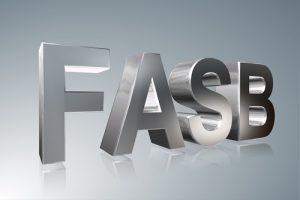 New lease accounting standards are coming to the transportation industry that will impact approximately $3 trillion in assets. While the implementation of these new standards isn't until January 2019 for publicly traded companies and January 2020 for private companies, preparing for compliance should begin now.
New lease accounting standards are coming to the transportation industry that will impact approximately $3 trillion in assets. While the implementation of these new standards isn't until January 2019 for publicly traded companies and January 2020 for private companies, preparing for compliance should begin now.
The Financial Accounting Standards Board (FASB) and International Accounting Standards Board (IASB) started a joint project to modernize lease accounting standards. The new regulations aim to solve two key issues with the current reporting standards: improved transparency and better comparability.
As these new standards change the way companies account for leases, a recent Deloitte poll found that just 14% of the companies surveyed consider themselves ready for the changes. To ensure you are prepared and in compliance, the following explains the new standards, answers common questions, and provides insight into preparation and planning for the future.
What are the new standards for operating and capital leases
Simply put, these new standards require lessees to record vehicle leases on their balance sheet as both liabilities and assets - Rights of Use (ROU) Assets. There are no grandfather exclusions on existing leases, except for operating leases that have an original lease term of 12 months or less.
Publicly traded companies with either operating or capital leases must comply with the new standard by January 1, 2019, and provide comparative data for leases retroactive to January 1, 2017. In other words, lessees must inventory leases that had not expired as of January, 1, 2017 and calculate a ROU asset & obligation. Private companies are required to comply by January 1, 2020 and are not obligated to pull data from previous years.
For operating leases, leased vehicles will appear as ROU assets and obligations on the balance sheet under the new accounting requirements and result in a straight-line expense. Operating lease obligations will not be considered debt; therefore it will not affect debt to equity ratios. Moreover, Operating leases will not be identified as interest and amortization expense. Therefore, it will not impact EBITDA. Lessees should check with their finance team to ensure operating lease obligations do not affect their borrowing covenants.
In the case of capital leases, nothing is changing, as these are currently assets on the balance sheet.
Leasing still remains more attractive than owning
The advantages of leasing when compared to ownership remain unchanged. Leasing avoids residual risk and related volatility of ownership. From a cash flow standpoint, leasing does not require an upfront down payment that is required in ownership. If maintenance is included in the lease, the cost of lease and maintenance is predictable which helps with the budgeting and planning processes. Furthermore, new technologies have increased the complexity of maintaining trucks. Coupled with the technician shortage, it is becoming more difficult for companies to find the personnel to maintain their trucks. Many lease providers have trained and certified technicians and a vast footprint to service vehicles.
Through a lease, you don't have to spend time on administrative tasks your provider can handle for you such as fuel tax reporting, technician training, compliance, and vehicle disposal. You can also leverage the lease provider's procurement power and economies of scale.
At Ryder, we bring all these solutions together under our ChoiceLease portfolio. This industry first gives you flexibility and choice when it comes to leasing a fleet, while allowing you to leverage our maintenance expertise and purchasing power, while giving you access to our more than 5,900 certified technicians and over 800 service facilities in North America. You get to choose the lease with the built-in maintenance level you prefer - Full Service, Preventive, or On-Demand. You can also choose the financing options and terms that fit your business best. Additionally, you benefit from added services such as fleet protection, fuel, roadside assistance, telematics, and rental vehicles. What you get is a compliant and reliable fleet with greater than 95% uptime, at a predictable monthly payment.

